Nightmare Pages of War: Japanese Cannibal Soldiers
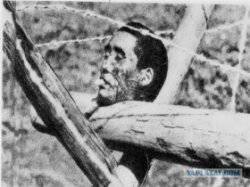 The fighting that took place in the Pacific during the Second World War is much better known in Britain and the United States than in our country. But until recently, the inhabitants of these countries did not know about this period either. The British historian Anthony Beevor decided to lift the veil over the bloody and terrible secret.
The fighting that took place in the Pacific during the Second World War is much better known in Britain and the United States than in our country. But until recently, the inhabitants of these countries did not know about this period either. The British historian Anthony Beevor decided to lift the veil over the bloody and terrible secret.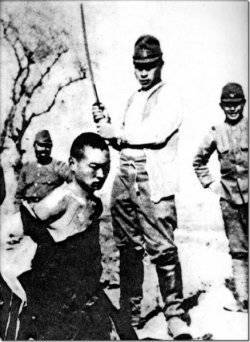 Beevor argues that at the end of the war, the soldiers of the Japanese Imperial Army engaged in cannibalism, and these were not separate antics of people who had gone mad from the horrors of war. This is a state strategy designed to encourage every warrior to fight to the last drop of blood. "Prisoners of war were used as" beef cattle ", they were left alive only in order to kill them one by one and eat them," the scientist states.
Beevor argues that at the end of the war, the soldiers of the Japanese Imperial Army engaged in cannibalism, and these were not separate antics of people who had gone mad from the horrors of war. This is a state strategy designed to encourage every warrior to fight to the last drop of blood. "Prisoners of war were used as" beef cattle ", they were left alive only in order to kill them one by one and eat them," the scientist states.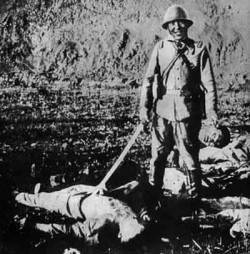 During the fighting for the Pacific Islands, Japanese soldiers and officers showed massive heroism, often bordering on fanaticism. Many Japanese garrisons fought to the last man. Instead of being captured, the Japanese often preferred ritual suicide - hara-kiri (seppuku).
During the fighting for the Pacific Islands, Japanese soldiers and officers showed massive heroism, often bordering on fanaticism. Many Japanese garrisons fought to the last man. Instead of being captured, the Japanese often preferred ritual suicide - hara-kiri (seppuku).The most fanatically minded of them continued the war even after it ended. So, in February, 1946, on the island of Lubang, during a battle with the Japanese, 8 soldiers of the allied forces were killed. Most of all at the same time famous junior lieutenant of Japanese military intelligence Hiro Onoda, who single-handedly fought a guerrilla war in the Philippines until March 10, 1974. During this time, he killed 130 people. Onoda's authorities surrendered only after receiving an order from their boss, Major Taniguchi. He emerged from the forest in full uniform, carrying a rifle, 500 ammunition, grenades and a samurai sword.
 However, the fanatical heroism of the soldiers could not save Japan from defeat. Almost all supply routes for the garrisons were blocked by the American fleet. Garrisons were left without reinforcements, ammunition and food, and often without orders. And they continued the resistance of their own mind.
However, the fanatical heroism of the soldiers could not save Japan from defeat. Almost all supply routes for the garrisons were blocked by the American fleet. Garrisons were left without reinforcements, ammunition and food, and often without orders. And they continued the resistance of their own mind.In the garrisons began a real famine. It was during this period that the flowering of cannibalism among the soldiers of the Japanese army occurred. He covered almost all the garrisons scattered over the Pacific islands, as well as in mainland China and Burma. During the war, 132 134 soldiers of the allied armies were taken prisoner by the Japanese; 35 756 people did not return home.
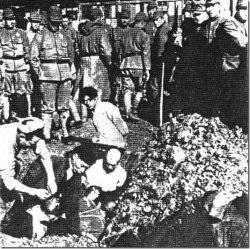 The conditions in Japanese captivity were appalling. They mocked prisoners of war, left them without food and medical care. Some were killed for fun, and near the end of the war - and for food. “These were not isolated incidents, but a general trend in all garrisons in China and the Pacific, which were cut off from supplies due to the actions of the US Navy,” writes Beevor. Most of these cases occurred in New Guinea and Borneo.
The conditions in Japanese captivity were appalling. They mocked prisoners of war, left them without food and medical care. Some were killed for fun, and near the end of the war - and for food. “These were not isolated incidents, but a general trend in all garrisons in China and the Pacific, which were cut off from supplies due to the actions of the US Navy,” writes Beevor. Most of these cases occurred in New Guinea and Borneo.Exhausted by hunger, the Japanese ate the corpses of defeated enemies. If they could not catch the enemy soldier or local resident, they ate their own. A case of cannibalism was documented on the Tititzim archipelago, when the Japanese killed and ate eight shot down American pilots. From a number of his ilk he stands out in that not only officers but also the general with the admiral took part in the "meal".
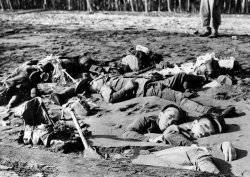 Lieutenant General Yoshio Tachibana in August 1944 was the commander of the garrison at Chichi-Jim on Bonin Island. One day, after drinking drunk, he ordered two American prisoners to be kneeled in front of him and beheaded them. But this brave general was not enough. He ordered the liver to be extracted from corpses and to cook sukiyaki from it - a meat dish with vegetables. This dish he ate in the company of his friends. Later the killings continued. And cannibalism too.
Lieutenant General Yoshio Tachibana in August 1944 was the commander of the garrison at Chichi-Jim on Bonin Island. One day, after drinking drunk, he ordered two American prisoners to be kneeled in front of him and beheaded them. But this brave general was not enough. He ordered the liver to be extracted from corpses and to cook sukiyaki from it - a meat dish with vegetables. This dish he ate in the company of his friends. Later the killings continued. And cannibalism too.In 1946, 30 people got sued for this case. Five of them were hanged: General Tatibama, Admiral Mori, Major Matoba, Captain Isi, and Teraki the doctor. Interestingly, there is no article for cannibalism in international law. Cannibals were convicted of "obstructing the honorary burial."
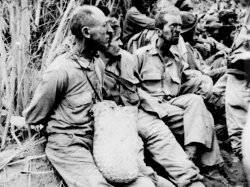 Here are more memories of Indian prisoner of war Lens Naik Khatam Ali, who was captured in New Guinea: “The Japanese began to choose prisoners. Every day, the soldiers killed and ate one prisoner. I myself have seen it happen. About 100 prisoners were eaten ... ".
Here are more memories of Indian prisoner of war Lens Naik Khatam Ali, who was captured in New Guinea: “The Japanese began to choose prisoners. Every day, the soldiers killed and ate one prisoner. I myself have seen it happen. About 100 prisoners were eaten ... ".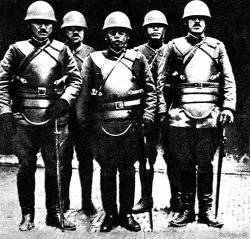 Even the Japanese writer Ooka Shohei in his novel “Lights on the Plain” describes cases of cannibalism in the Japanese army. The subject of cannibalism in its creative interpretation is the very essence of any war.
Even the Japanese writer Ooka Shohei in his novel “Lights on the Plain” describes cases of cannibalism in the Japanese army. The subject of cannibalism in its creative interpretation is the very essence of any war.However, at the International Tribunal for the Far East - the trial of Japanese war criminals, held in Tokyo from 3 in May 1946 of the year to 12 in November of 1948 of the year, the topic of cannibalism did not rise. Beevor explains this by the fact that the US and Australian authorities have entered into an agreement. It is officially believed that the reason was the desire to spare the feelings of relatives of prisoners of war.
Information